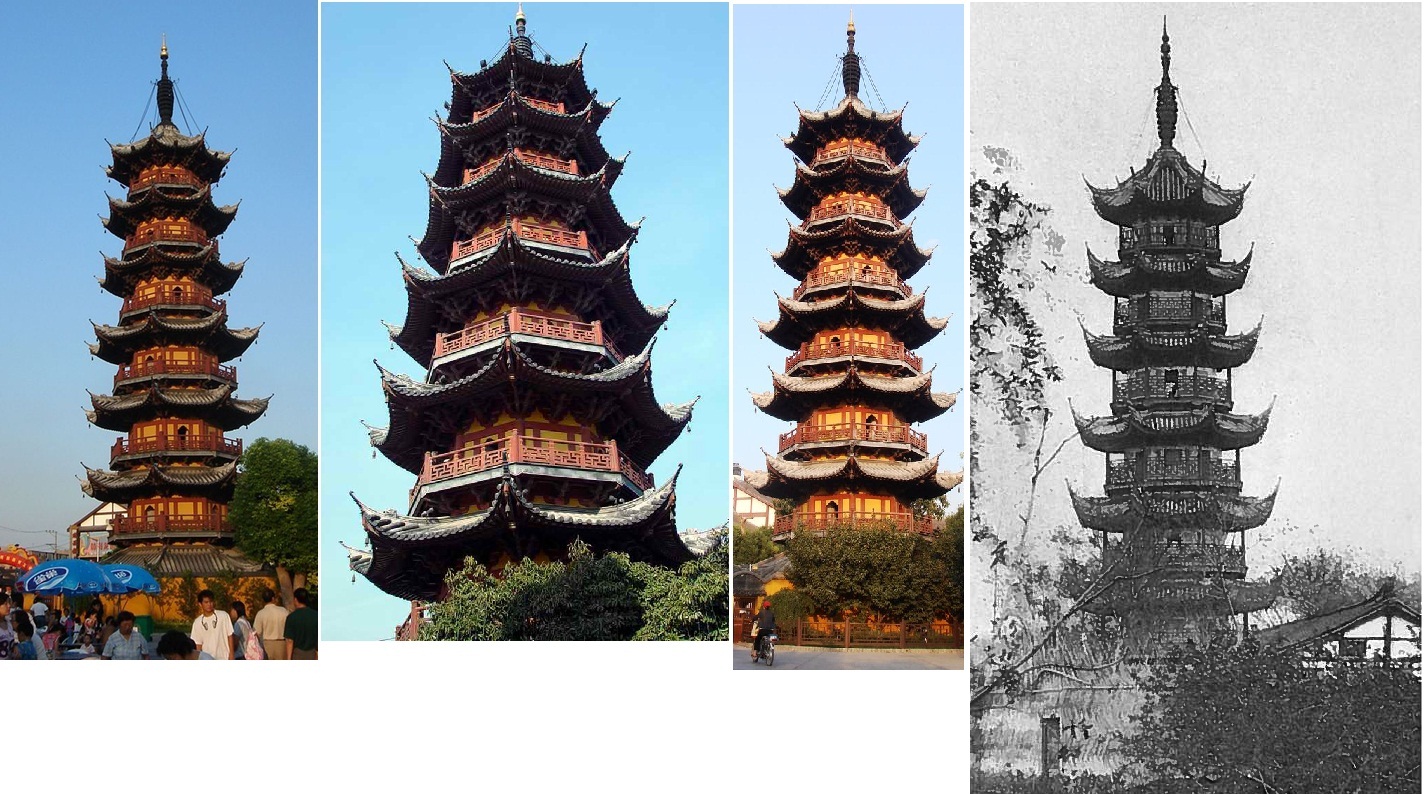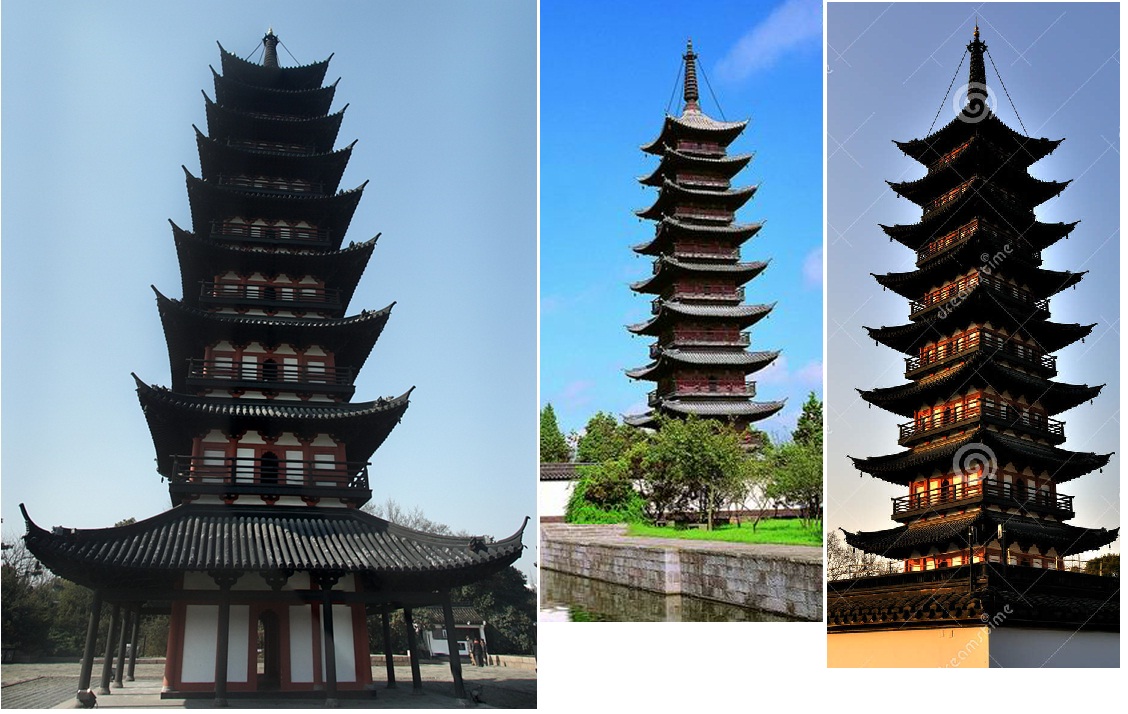Awesome
Nation- (and City-) Specific Victory City Markers
-
-
Man you guys are incredible. Ossel, your art work is amazing. Marc your a remarkable researcher and fast. You guys, both, have amazing talent. Kudos to the both of you. :-D
-
Man you guys are incredible. Ossel, your art work is amazing. Marc your a remarkable researcher and fast. You guys, both, have amazing talent. Kudos to the both of you. :-D
Much appreciated, and many thanks to you and everyone else for the feedback you’ve been contributing on the various proposals, which is very valuable. Ossel is the one who has the toughest job – I’m amazed at how he can turn flat pictures into such good-looking 3D models, especially when you consider how small the markers are intended to be once they’re manufactured.
Anyway, we’re not out of the woods yet: Stalingrad may have fallen, but our remaining tough-nut-to-crack, Manila, is still resisting valiantly!
-
I may have found a good solution to our Manila problem: Fort Drum, the “concrete battleship” (actually a heavily fortified island fortress) located at the mouth of Manila Bay. There are photos of a detailed Fort Drum model (shown from several angles) at this site: http://www.finewaterline.com/pages/gallery/everything else/pffortdrum/pffortdrum.htm . The marker could be designed similarly to the Pearl Harbor one, with the fort surrounded by water and with a partial shoreline of Manila Bay framing part of the marker’s rim.
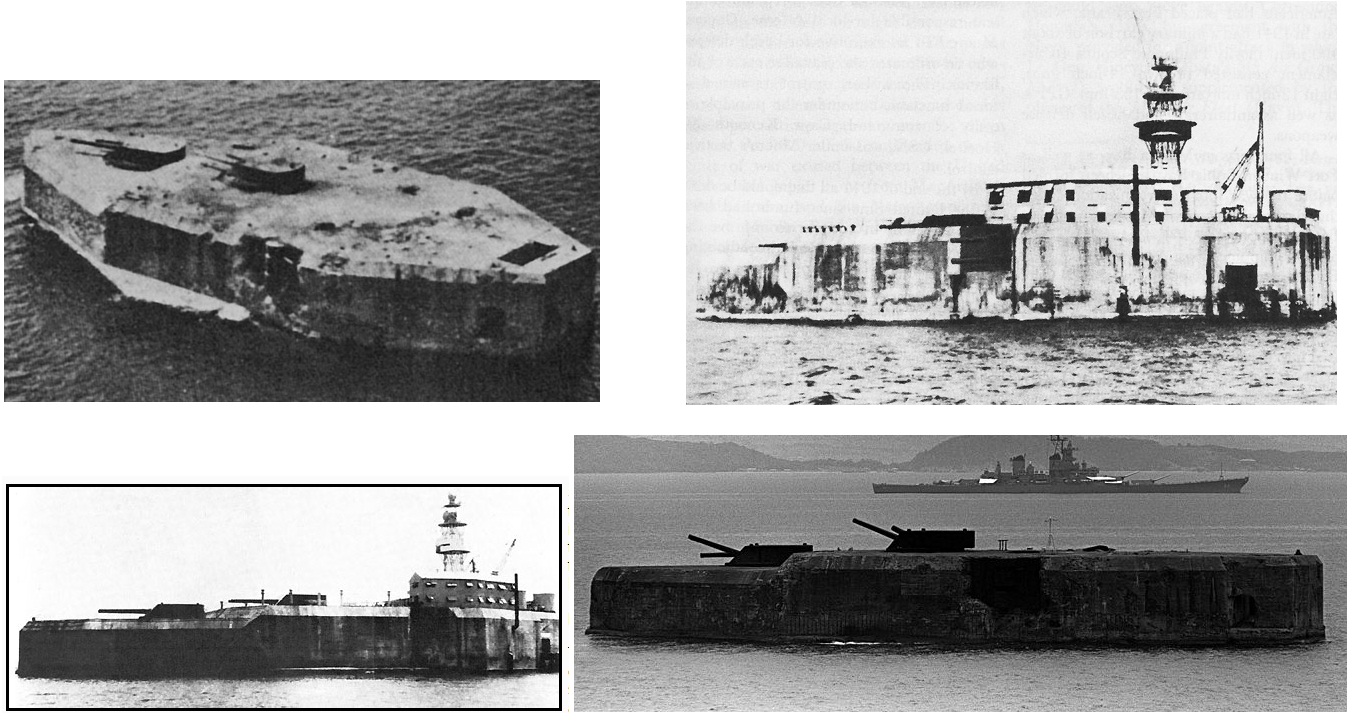
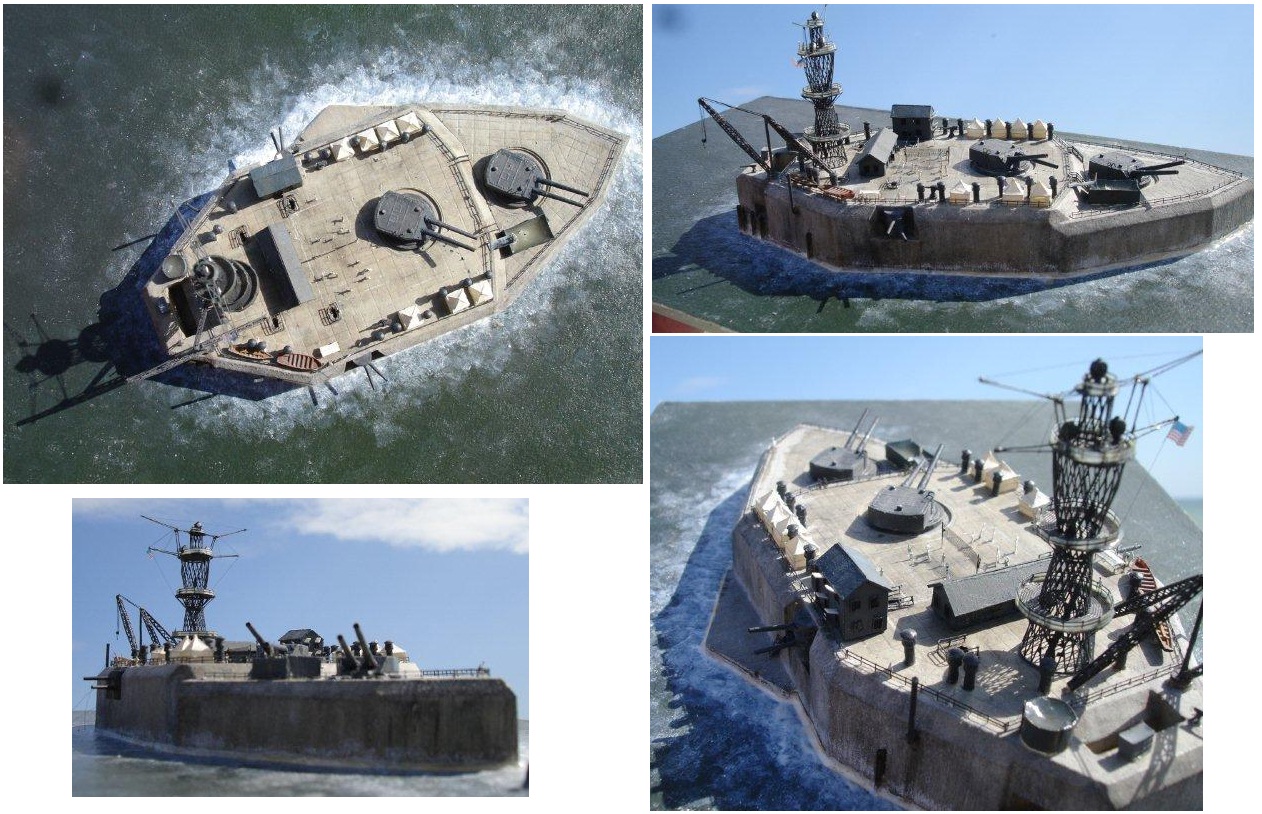
-
I like the Fort Drum suggestion!
So…I figured I’d crank out Cairo real quick since it is undoubtedly the simplest, but once I got done with the pyramids, my obsession with detail got the better of me, and I’ve admittedly spent all day struggling with modeling the Sphinx… :oops:
Unfortunately, it ended up defeating me, so here is the very simple, yet effective, Cairo.
-
Unfortunately, it ended up defeating me, so here is the very simple, yet effective, Cairo.
“Simple but effective” worked nicely for the Russians when they designed the T-34, and I think it works equally well here. The model looks especially great in the side view – perhaps because that’s the angle from which the Pyramids are usually seen in most photographs. Anyway, don’t feel bad about the Sphinx – the original probably took years to sculpt!
I’ll be away from the office on Friday, so my feedback over the next three days is going to be infrequent and erratic, but I’ll try to visit the forum at least once per day because this project is really picking up momentum and I’m very eager to see the forthcoming developments!
-
@CWO:
I may have found a good solution to our Manila problem: Fort Drum, the “concrete battleship” (actually a heavily fortified island fortress) located at the mouth of Manila Bay. There are photos of a detailed Fort Drum model (shown from several angles) at this site: http://www.finewaterline.com/pages/gallery/everything else/pffortdrum/pffortdrum.htm . The marker could be designed similarly to the Pearl Harbor one, with the fort surrounded by water and with a partial shoreline of Manila Bay framing part of the marker’s rim.
I should have opened my mouth on this one, but I figured since fort drum was a HBG game piece, we didn’t need it, but this is a good alternative as any for those that haven’t bought that piece. :-)
-
I like the Fort Drum suggestion!
So…I figured I’d crank out Cairo real quick since it is undoubtedly the simplest, but once I got done with the pyramids, my obsession with detail got the better of me, and I’ve admittedly spent all day struggling with modeling the Sphinx… :oops:
Unfortunately, it ended up defeating me, so here is the very simple, yet effective, Cairo.
That is good enough. If someone can’t tell that that is Cairo, then they are in trouble anyway, LOL. :-D
-
fort drum was a HBG game piece
Ah. I wasn’t aware of that. I came across a reference to the fort while reading a document on the US recapture of Manila. Which HBG battle pieces set is it part of? It must be one of the ones at the planning stage because I own all the ones that have already been produced and shipped.
-
@CWO:
fort drum was a HBG game piece
Ah. I wasn’t aware of that. I came across a reference to the fort while reading a document on the US recapture of Manila. Which HBG battle pieces set is it part of? It must be one of the ones at the planning stage because I own all the ones that have already been produced and shipped.
It is under the fortification section of the products for sale. It has been there for it least 2 or 3 months, but if you don’t check that section, you will miss a lot of cool stuff. I have that and bought panther turrets as well, sub pens and bunkers. Check them out. :-D
-
Sorry Marc, I told you wrong. It is under facilities. Sorry, my bad! :oops:
-
Sorry Marc, I told you wrong. It is under facilities. Sorry, my bad! :oops:
No problem – I found it by keyword without any problems. I’m relieved to see that HBG’s version of Fort Drum doesn’t sit on a round base (as Ossel’s VC markers are all going to do) and that the guns and other features are printed on the flat HBG marker (unlike in Ossel’s version, which will use 3D sculpting) – so the two markers aren’t going to conflict with each other, which is good.
-
@CWO:
Sorry Marc, I told you wrong. It is under facilities. Sorry, my bad! :oops:
No problem – I found it by keyword without any problems. I’m relieved to see that HBG’s version of Fort Drum doesn’t sit on a round base (as Ossel’s VC markers are all going to do) and that the guns and other features are printed on the flat HBG marker (unlike in Ossel’s version, which will use 3D sculpting) – so the two markers aren’t going to conflict with each other, which is good.Â
Ok cool, that is what I was worried about. :-D
-
Just an update, found some really good shots of that tower next to Barmaley Fountain in Stalingrad (Volgograd). It’s still standing! You can see it in street view on Google Maps. Think I’m going to use that as inspiration for the piece, and probably knock it out today.
-
Just an update, found some really good shots of that tower next to Barmaley Fountain in Stalingrad (Volgograd). It’s still standing! You can see it in street view on Google Maps. Think I’m going to use that as inspiration for the piece, and probably knock it out today.
Ossel, that will do! Thanks for designing these. :-)
-
Just an update, found some really good shots of that tower next to Barmaley Fountain in Stalingrad (Volgograd). It’s still standing!
That’s a neat find! Comparing it with the movie set pictures from my earlier post, it looks as if the horizontal section of the railway station building has been demolished since the war, with only the tower section surviving (and no doubt refurbished to repair wartime damage). It’s good that you found such a detailed shot of this elaborate tower, since that’ll be the complicated part of the building to model; the horizontal section is much simpler in appearance, so it’ll be easier for you to include it in the marker sculpt. I guess they didn’t bother reconstructing most of the original station after WWII because they built a completely new Volgograd railway station not far from there, in the heavy-handed Stalinist architectural style that was popular at the time. There are two reproductions of the Barmaley Fountain in Volgograd today (one white and one grey), so the one you found must be the one which is close to the original station’s location. Looking forward to seeing the upcoming marker!
-
Now that there are good solutions in place for the two cities that were giving us our biggest headaches (Stalingrad and Manila), I’m revisiting the four remaining VCs that don’t have obvious iconic structures (Calcutta, Warsaw, Shanghai and Hong Kong) to see if the suggestions which have already been made for them can be improved upon.
I started with Calcutta and Warsaw, and in both cases I ended up reconfirming my original preferences. For Calcutta, I was all set to recommend replacing my earlier recommendation (the Dakshineswar Kali Temple) with a different building that I discovered today, the fantastic-looking Calcutta Birla Mandir. Then I noticed that it had been built between 1970 and 1996…so it’s definitely not appropriate for use as a WWII marker. As a consolation, however, I found a much better picture of the Dakshineswar Kali Temple (see below), which – at 159 years of age – easily fits the WWII requirement.
After Calcutta, I read a bit about Warsaw’s architectural history and I also tried to see whether I could find any great-looking structures that were closely associated with the 1939 siege of Warsaw. The Wikipedia article on the planned destruction of Warsaw, which includes a list of notable damaged or destroyed structures, was another interesting source. It turns out that Warsaw has buildings in a plethora of architectural styles, from the gothic period onward, so in a sense it doesn’t have any uniquely representative style of construction. So I returned to my original approach of looking at churches, especially Catholic ones, given that over 90% of Poles are Catholics and that the Church is so influential in Poland. For each building, I asked myself if it would look out of place in a western Europeam country – say, Britain or France or Germany. If the answer was “no”, I eliminated it as insufficiently distinctive in terms of national styles. The one I liked best from the remaining buildings turned out to be my previous recommendation, the Church of the Assumption of the Virgin Mary and of St. Joseph – more commonly known as the Carmelite Church of Warsaw, which is a much easier name to manage. The central onion dome and the two belfries shaped like censers are the features I like the best, and which I think give the church a somewhat Slavic / East European appearance.
Tomorrow I’ll have a closer look at Hong Kong to see if the current choice for that city (the Main Altar of the Wong Tai Sin Temple) still holds up. As for Shanghai, I watched a documentary about it this afternoon and it seems like the city was architecturally chaotic: each Western-dominated enclave in the city had its own imported building style (French, British, etc.), the Chinese parts of town were on the whole quite poor, and there was also a push in the 1920s and 1930s to modernize the city by building skyscrapers. The walled “Old City of Shanghai” is perhaps the most authentically Chinese part of town, and one building there that might be worth considering is the Dajing Ge Pavilion. Although partially dismantled in 1912, the surviving part of the structure (which has a nice pagoda roof) incorporates the last remaining portions of the old city’s walls (which have rectangular crenels, and hence look like military fortifications rather than just plain walls), and it’s currently protected as a heritage building. One advantage it might have over Dianchun Hall (the current marker candidate) is that the Yu Garden buildings have repeatedly been damaged and/or destroyed since the 19th century, so it’s hard to be sure if the current Dianchun Hall structure (repaired from 1956 to 1961) looks the way it would have looked prior to WWII (when it was again damaged). So I’m thinking that the Dajing Ge Pavilion might be a better option. Thoughts?


-
I’ve completed my review of Hong Kong and it looks like the Main Altar of the Wong Tai Sin Temple remains the best choice. Hong Kong’s got huge numbers of modern buildings (which obviously aren’t suitable for this project), and the various structures it retains from the British colonial era don’t tend to have Chinese designs. Of the Chinese-style heritage buildings in Hong Kong that I’ve checked out, the Main Altar at Wong Tai Sin is in my opinion still the best-looking one. The pagoda at the Ten Thousand Buddhas Monastery, with its nine-tiered roof, is the only one that rivals Wong Tai Sin in terms of being dramatically Chinese in its style, but it’s way too tall relative to its height to make a stable marker sculpt, its surrounding buildings are uninteresting, and it doesn’t seem to be as well-known as Wong Tai Sin (which is said to be one of the most iconic temples in Hong Kong).
One surprising thing which I discoved from my review today was that the Wong Tai Sin picture from Wikipedia which I posted last week was actually a bit misleading: it mostly shows the Main Altar’s gateway rather than the principal building. The Main Altar consists of a principal building to which is attached a bracket-shaped colonnaded portico that creates a small courtyard. The left-side and right-side colonnades have a simple sloped roof; the gateway has a single pagoda-style roof tier; and the principal building has two pagoda-style roof tiers. There are a few additional buildings nearby on the temple grounds, but the only one that would need to be modeled is the Main Altar, whose roof and portico are very distinctive-looking.
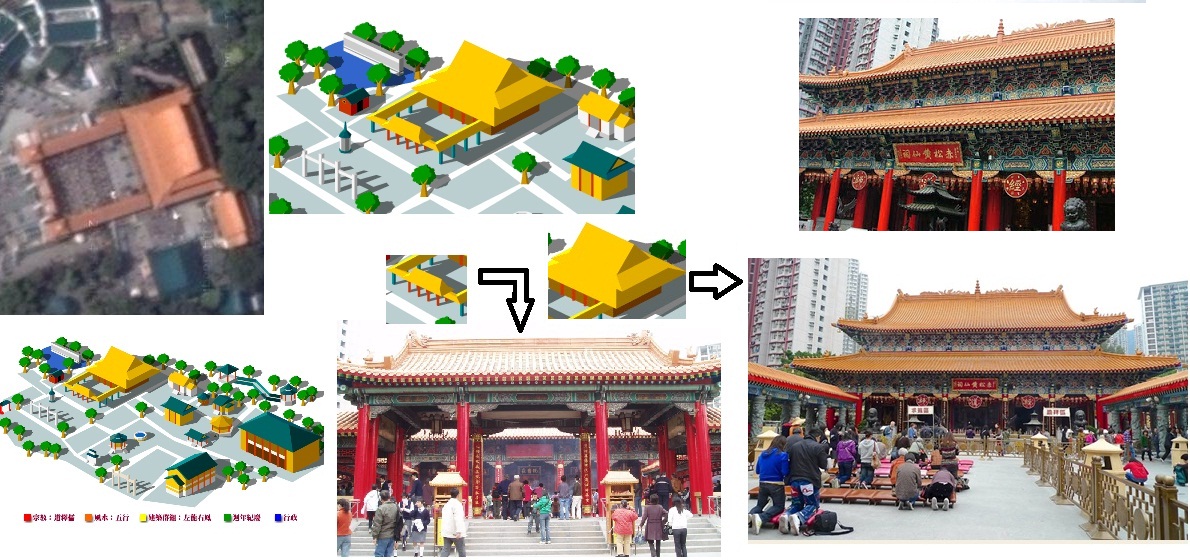
-
@CWO:
I’ve completed my review of Hong Kong and it looks like the Main Altar of the Wong Tai Sin Temple remains the best choice. Hong Kong’s got huge numbers of modern buildings (which obviously aren’t suitable for this project), and the various structures it retains from the British colonial era don’t tend to have Chinese designs. Of the Chinese-style heritage buildings in Hong Kong that I’ve checked out, the Main Altar at Wong Tai Sin is in my opinion still the best-looking one. The pagoda at the Ten Thousand Buddhas Monastery, with its nine-tiered roof, is the only one that rivals Wong Tai Sin in terms of being dramatically Chinese in its style, but it’s way too tall relative to its height to make a stable marker sculpt, its surrounding buildings are uninteresting, and it doesn’t seem to be as well-known as Wong Tai Sin (which is said to be one of the most iconic temples in Hong Kong).
One surprising thing which I discoved from my review today was that the Wong Tai Sin picture from Wikipedia which I posted last week was actually a bit misleading: it mostly shows the Main Altar’s gateway rather than the principal building. The Main Altar consists of a principal building to which is attached a bracket-shaped colonnaded portico that creates a small courtyard. The left-side and right-side colonnades have a simple sloped roof; the gateway has a single pagoda-style roof tier; and the principal building has two pagoda-style roof tiers. There are a few additional buildings nearby on the temple grounds, but the only one that would need to be modeled is the Main Altar, whose roof and portico are very distinctive-looking.Â
Marc, I’m sorry that I don’t know enough about these two cities to comment, but I’m trusting your judgment, because you have doing a great job on the research of each cities architectural structures. I’m sure Ossel will get some idea of how he will implement on what you have researched.
It is really cool to read and see these neat structures from all over the world.
Thanks again for all this great information. :-)
John
John
-
I’ve been doing some more research on Shanghai, for which the building suggestions so far still don’t seem to be optimal, and I think I’ve found two stronger candidates for the marker sculpt. I found them both in a 2004 book called Touring Shanghai. The first option is the Longhua Pagoda. It was built in the 5th century. It’s 40 meters tall, and its 7 stories have an octogonal shape. It’s one of the largest of the 16 pagodas in Shanghai. The second option is the Square Pagoda of Songjiang, built in 1068. It has 9 stories and, at 48.5 meters in height, it was once the tallest building in Shanghai. It’s considered to be the most beautiful pagoda in the lower region of the Yangtse River.
Both of these tall, slender buildings would contrast nicely with the contender for the Hong Kong marker, the Main Altar of the Wong Tai Sin Temple, which is low and broad. Both would work fine in my opinion, but I have a slight preference for the Longhua Pagoda because it’s a little less tall and because its octogonal shape gives it a rounder appearance than the Square Pagoda of Songjiang, which would further distinguish it from the rectangular Wong Tai Sin Temple.
